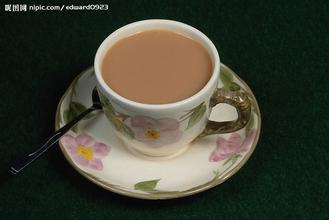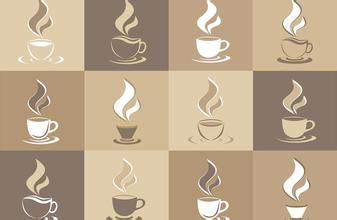Introduction to the flavor and taste characteristics of Columbia Santa Rita Manor Coffee with rich taste and endless aftertaste
After the founding of the United States, there was a dispute over the location of the capital. The North wants to locate its capital in New York. And the south wants the capital to be located in the south. In the end, both the North and the South of the United States
Washington, D.C. Flag
Washington, D.C. Flag
Give in and build a new city as the capital of the United States in the south not far from the north. The location is located by Madison (James Madison,1751-1836, the fourth President of the United States) and Alexander Hamilton (Alexander Hamilton, January 11, 1757-July 12, 1804, one of the drafters of the Constitution, was the first Treasury Secretary of the United States) in Thomas Jefferson (April 13, 1743, ─ was the third President of the United States on July 4, 1826). It was also discussed at a dinner invited by the main drafter of the American Declaration of Independence. At that time, the "federal" city was planned as a diamond area covering an area of 100 square miles. Its actual location on the Potomac River is determined by President Washington, who himself suggested that the capital of the United States be called a "federal city." But on September 9, 1791, the capital of the United States was named Washington. Although Washington himself lives in Mount Vernon not far from Washington, he rarely visits the world-famous Smithsonian Museum (Smithsonian Museum) in Washington, where most museums are located in downtown Washington. Museums under the Smithsonian Museum include Arthur M. Sackler gallery, Hershhorn Museum and Sculpture Garden, National Air and Space Museum, National Museum of American History, National Museum of Native Americans, National Museum of Natural History, National Portrait Museum, National Postal Museum, Museum of American Art, Smithsonian National Zoological Park, etc. The National Zoo is one of the few cities in the United States that has an exhibition of giant pandas. The Smithsonian Museum also has a number of exhibitions and research institutions in Maryland and Virginia. Among them, Freer gallery and Sackler gallery (Freer and Sackler Galleries) mainly collect Asian art, which is also a Chinese pavilion.
The National Gallery of the United States is affiliated to the Smithsonian Museum, but operates independently. The Library of Congress and the National Archives are also important museum-type institutions. The National Archives contains the original Declaration of Independence and the Constitution of the United States.
The first part is the triangle of the background, which symbolizes the Andes and implies that most of the Arabica coffee growing areas in Colombian coffee belong to high-altitude mountains. It is well known that the main coffee producing areas in Colombia are located in three mountains arranged with the word "Sichuan", all of which are part of the Andes. According to the geographical environment and climate, the characteristics and flavor of coffee in different regions are the same.
The second part is the mule. Please note that it is not a donkey! In Colombia coffee farmers actually use mules to carry coffee from the mountains. Because the mountain road in the coffee growing area of Colombia is very rugged, coffee farmers mostly use mules as a means of transportation. because of such unique geographical conditions, even with the development of transportation and science and technology today, it is impossible to transport coffee and raw beans from more than 1000 meters above sea level. and rugged mountain roads to transport coffee beans, so the way of carrying mules continues to this day.
The third part is the man in the straw hat, who has a name. His name is Juan Valdez. People used to call him "Uncle JUAN VALDEZ". Juan Valdez is the representative image of Colombian coffee growers and a symbol of Colombian coffee, which distinguishes it from coffee from other countries of origin and is accepted by different markets. In the last 40 years, Colombian coffee growers have made great efforts to create the "JUAN VALDEZ" brand we see today. In 2005, the New York Times confirmed the importance of this brand in the United States, because its trademark recognition has exceeded many of the world's leading brands and gradually become a world-famous brand.
In order to better promote Colombian coffee, the Colombian Coffee Growers Association (FNC) launched a live-action version of Juan Valdez based on this image.
Now the uncle is the third-generation real-life version. Uncle Juan Valdez, who represents Colombian coffee farmers, as the ambassador of Colombian coffee, will travel around the world to promote Colombian coffee. A beard, a straw hat and the mules around him are his necessary wardrobe. Uncle Dou was still happy to see him at the 2010 Shanghai World Expo.

Important Notice :
前街咖啡 FrontStreet Coffee has moved to new addredd:
FrontStreet Coffee Address: 315,Donghua East Road,GuangZhou
Tel:020 38364473
- Prev

Introduction to the characteristics of coffee flavor and taste in the elegant floral fragrance of Manor Ireta in Panama
The Panamanian flag was launched on November 3, 1904. The flag is rectangular and the ratio of length to width is 3:2. The flag consists of four rectangles of white, red and blue. White symbolizes peace; red and blue represent the former Panamanian Liberal Party and the Conservative Party respectively, and they are also symbols of the two parties' United struggle for the interests of the nation. The blue star on the white background on the upper left represents loyalty and integrity, and the red star on the white background on the lower right represents
- Next

Introduction to the flavor and taste characteristics of Costa Rican St. Roman Manor Coffee
Costa Rica is located in the Central American isthmus, belonging to North America, 10 north latitude, 84 west longitude. It is bordered by the Caribbean Sea to the east and the North Pacific Ocean to the west, with a coastline of 1290 km (212km on the east coast and 1016 km on the west coast). Costa Rica borders Nicaragua in the north (309 km long border) and Panama (639 km long border) south-southeast. Total
Related
- Does Rose Summer choose Blue, Green or Red? Detailed explanation of Rose Summer Coffee plots and Classification in Panamanian Jade Manor
- What is the difference between the origin, producing area, processing plant, cooperative and manor of coffee beans?
- How fine does the espresso powder fit? how to grind the espresso?
- Sca coffee roasting degree color card coffee roasting degree 8 roasting color values what do you mean?
- The practice of lattes: how to make lattes at home
- Introduction to Indonesian Fine Coffee beans-- Java Coffee producing area of Indonesian Arabica Coffee
- How much will the flavor of light and medium roasted rose summer be expressed? What baking level is rose summer suitable for?
- Introduction to the characteristics of washing, sun-drying or wet-planing coffee commonly used in Mantenin, Indonesia
- Price characteristics of Arabica Coffee Bean Starbucks introduction to Manning Coffee Bean Taste producing area Variety Manor
- What is the authentic Yega flavor? What are the flavor characteristics of the really excellent Yejasuffi coffee beans?

